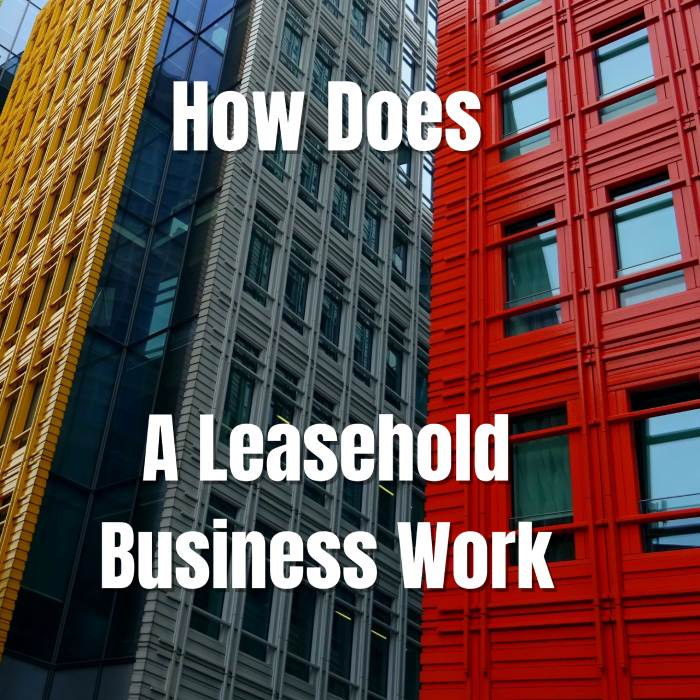Every investor’s goal should be to maximize their profits while minimizing their expenses. Owning commercial properties plays a significant role in helping an investor optimize their revenue. Many companies don’t want to buy property for their business but prefer to enter into a leasehold agreement for a specified period—which could run for decades. Many companies prefer leaseholds over buying because:
- It’s cheaper to acquire and run
- It meets a specific need with flexibility for the future
Commercial property owners and landlords need to have a solid understanding of what a leasehold means for a commercial property to make a financially sound decision when choosing their tenants and lease terms.
Without proper knowledge of leaseholds, investors can find themselves losing money or barely breaking even. We’ll look at how leasehold for business works and how you can improve your leasehold returns.
Understanding Leasehold Basics
A leasehold contract stipulates the terms of the leasehold agreement between the tenant and the property owner or landlord. These contracts are generally complex agreements that spell out the landlord’s responsibilities, tenant’s responsibilities, security deposits, and the length of the leasehold. As a commercial property owner, you want to negotiate the most extended lease term possible and, in exchange, can offer terms that benefit the tenant, such as lower deposits, discounted rent, etc.
Once you’re ready to rent out your commercial space using a leasehold, you need to make some critical decisions such as:
- Length of a favorable lease-check leasehold length that gives you the best return on your investment
- Rent
- Your budget for making improvements to the property to accommodate a commercial tenant
Types of Leaseholds
There are two main types of leaseholds that a commercial owner can offer:
Tenancy for Years
A tenancy for years is a type of contract in which there is a set start and end date for the tenant occupying the building.
Periodic Tenancy
Commercial owners typically offer periodic tenancies once a tenancy for years has expired and the tenant would still like to utilize the property on a month-to-month basis. In order to terminate this agreement, either party needs to notify the other 30 days before the tenant leaves the space.
Advantages and Disadvantages of Leaseholds
Leasehold Advantages:
As a commercial property owner, the advantages to leasing out a commercial space rather than selling it include:
- Monthly cash flow
- Equity appreciation: commercial owners take advantage of appreciation as they collect rent.
- Tax advantages
- Limited hours of operation: when owning or managing residential properties, the landlord or owner can get a call in the middle of the night due to an emergency maintenance issue, but business owners usually wait until business hours to contact their landlord.
- Reduce the number of expenses: depending on your leasehold agreement, you can require tenants to pay for certain maintenance expenses.
Leasehold Disadvantages
- Risk of tenants damaging property
- Risk of injury, especially with storefront with lots of foot traffic.
- Increased time commitment: if your commercial property houses different businesses, you will need to spend more time properly managing each unit.
Consider Lease Improvements
If a commercial tenant requires improvements to the property to accommodate their business there are different ways of taking care of these needed improvements.
There are primarily four ways a landlord pays for leasehold improvements:
- Tenant improvement allowance: The tenant receives money from the landlord to cover the upgrades. The tenant oversees the work to their satisfaction.
- Rent discounts: The landlord offers the tenant free rent or a rent discount for several months. The tenant uses this money to make improvements.
- Building standard allowance: The landlord makes an offer of the improvements they’re willing to make, and the tenant chooses some items. The tenant caters for any modifications not in the offer.
- Turnkey projects: The tenant submits their improvement plan with cost estimates, and the landlord pays for the work.
Leasehold Property Management
Buying a leasehold that meets your investment needs is one thing and maximizing it for profits is a new challenge you acquire. The duties you’ll have to maintain to keep track of lease terms include:
- Tracking expenses
- Managing vendors
- Communicating with tenants
- Collecting rent
- Invoicing your tenants on time
UnitConnect’s property management software helps commercial owners and landlords manage these responsibilities, saving you valuable time and building credibility. Start your free trial today and see your property management tasks simplified.






